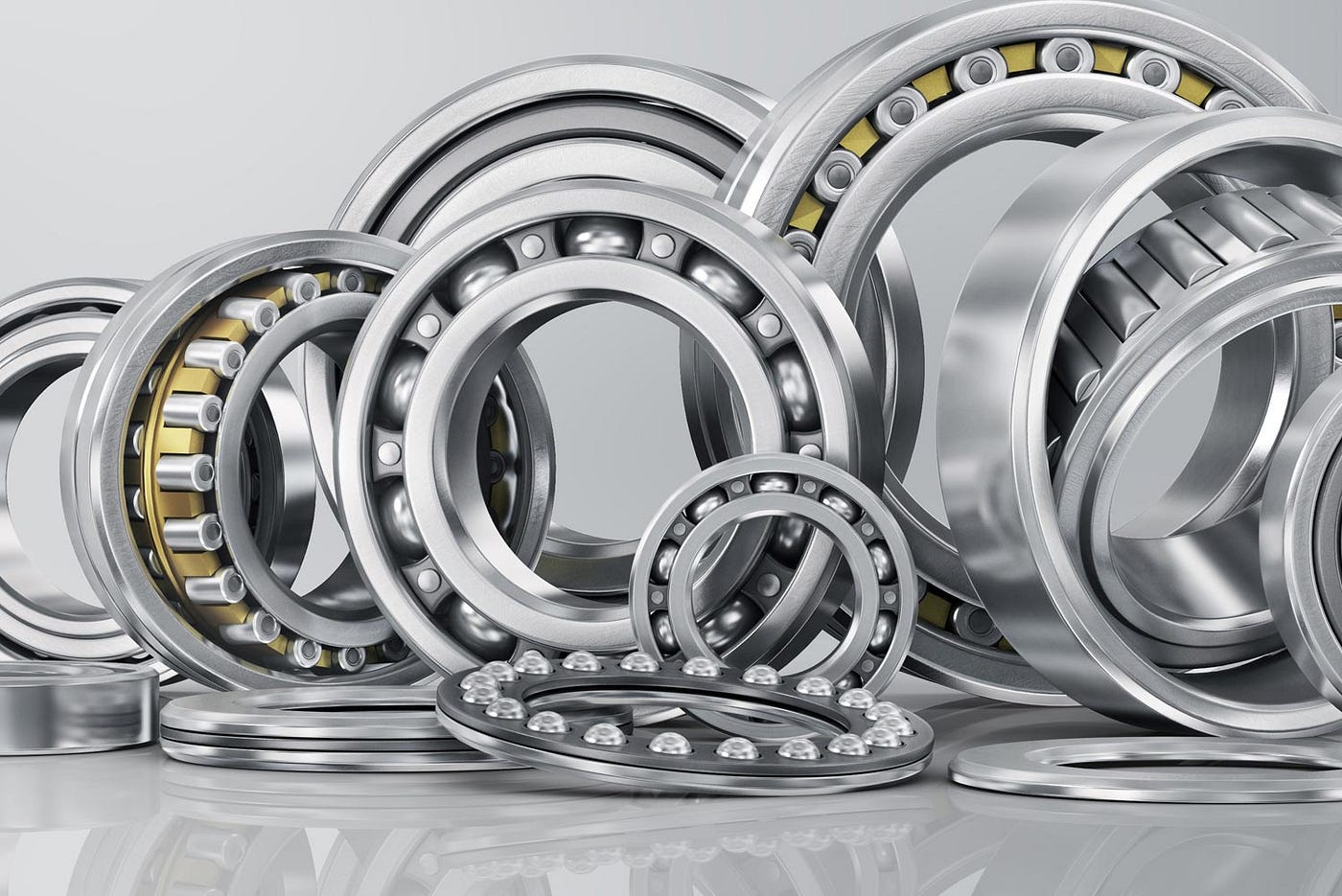How Volution Bearing can Save You Time, Stress, and Money.
Wiki Article
Volution Bearing Fundamentals Explained
Table of ContentsA Biased View of Volution BearingFacts About Volution Bearing RevealedTop Guidelines Of Volution BearingVolution Bearing Things To Know Before You Buy
An axial (or drive) bearing load is when force is parallel to the axis of the shaft. A radial bearing load is when force is vertical to the shaft. A mix bearing tons is when parallel and perpendicular pressures produce an angular force family member to the shaft. Ball bearings are made with spherical balls and can disperse loads over a medium-sized surface location.Below is a quick referral for the kind of bearing lots and the very best ball bearing for the job: Radial (vertical to the shaft) and light lots: Select radial sphere bearings (additionally referred to as deep groove sphere bearings). Radial bearings are some of one of the most usual kinds of bearings on the market.
Roller bearings are developed with round rollers that can distribute lots over a bigger surface area than sphere bearings. Below is a fast referral for the type of birthing tons and the ideal roller bearing for the job: Radial (vertical to the shaft) lots: Choose typical cylindrical roller bearings Axial (propelled) (parallel to the shaft) lots: Select round drive bearings Combined, both radial and axial, tons: Pick a taper roller bearing The rotational rate of your application is the next element to look at when picking a bearing.
They carry out much better at greater rates and offer a higher speed variety than roller bearings. One factor is that the contact between the rolling aspect and the raceways in a round bearing is a factor as opposed to a line of contact, like in roller bearings. Because rolling components press into the raceway as they roll over the surface, there is much less surface deformation happening in the point tons from ball bearings.
A Biased View of Volution Bearing

If this happens, a basic and typical option is to change the sphere bearing material from steel to ceramic. This keeps the bearing size the same but offers roughly a 25% higher speed ranking. Given that ceramic product is lighter than steel, ceramic rounds generate less centrifugal force for any offered speed.
One factor is that the spheres are smaller and smaller sized spheres weigh much less and create less centrifugal force when revolving. Angular call bearings likewise have an integrated preload on the bearings which functions with centrifugal forces to appropriately roll the rounds in the bearing. If you are designing a high-speed application, then you'll want a high-precision bearing, usually within the ABEC 7 accuracy course.
The Ultimate Guide To Volution Bearing
High accuracy bearings are reliable for applications that go fast since they make certain good ball and raceway interaction.Some applications, like reducing device pins, will only allow a little inconsistency to occur on its rotating elements. If you are crafting an application similar to this, then select a high precision bearing due to the fact that it will create smaller system runouts as a result of the tight tolerances the bearing was produced to. Bearing rigidness is the resistance to the pressure that creates the shaft to differ its axis and plays a key role in decreasing shaft runout.

When the angular get in touch with bearings are set up, the balanced out is eliminated which triggers the spheres to press into the raceway with no outside application pressure. This is called preloading and the procedure enhances birthing rigidness even before the bearing sees any application pressures. Recognizing your bearing lubrication requirements is crucial for selecting the best bearings and needs to be taken into consideration early in an application layout.
A Biased View of Volution Bearing
Lubrication develops a movie of oil between the rolling aspect and the bearing raceway that helps stop rubbing and getting too hot. The most typical kind of lubrication is grease, which consists of an oil with a thickening agent. The thickening agent maintains the oil in position, so it won't leave the bearing.
This is called the application or bearing n * dm value. Prior to you select an oil, you need to locate your applications ndm value.
Contrast your ndm value to the oil's max speed worth, located on the datasheet. If your n * dm worth is more than the grease max rate value on the datasheet, after that the grease will not be able to give adequate lubrication and premature failing will certainly happen. Another lubrication option for high-speed applications are oil haze systems Go Here which blend oil with pressed air and then infuse it into the bearing raceway at metered periods.
Report this wiki page